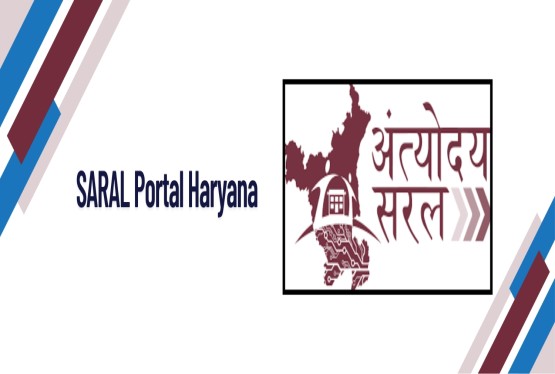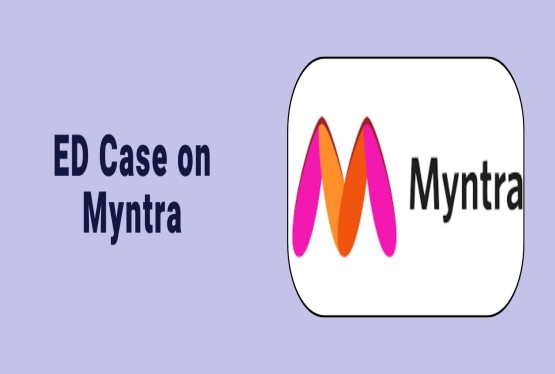Flipkart, one of India’s leading e-commerce platforms, has recently received a Non-Banking Financial Company (NBFC) license from the Reserve Bank of India (RBI). This major development makes Flipkart the first Indian e-commerce player to enter the direct lending space. The license was issued to Flipkart Finance Private Limited on March 13, 2025. This strategic move is expected to significantly alter the fintech and e-commerce ecosystem in the country, allowing Flipkart to lend directly to its customers and sellers.
Flipkart's Journey Towards the NBFC License
The process of obtaining the NBFC license has been a long and meticulous journey for Flipkart. The process involved navigating through rigorous RBI guidelines and demonstrating the company’s capability to operate a lending business within the legal framework. After three years of consistent effort and fulfilling countless compliance requirements, Flipkart finally received the certificate of registration from the RBI.
This license allows Flipkart Finance Private Limited to engage in lending activities but not to accept public deposits. This classification aligns with the RBI's vision to regulate non-banking institutions that offer financial services without becoming full-fledged banks.
What is an NBFC License and Why it Matters?
A Non-Banking Financial Company (NBFC) license is a registration granted by the Reserve Bank of India that allows companies to provide certain banking services like loans and credit facilities without being a bank. NBFCs cannot accept demand deposits like savings or current account balances but can engage in asset financing, lending, and investment activities.
For Flipkart, securing the NBFC license from RBI means the ability to provide loans to customers and sellers directly through its platform and associated fintech app, super.money. This reduces its reliance on third-party lenders and opens new revenue streams.
Strategic Shift: Moving Holding Company to India
In a related strategic move, Flipkart announced the relocation of its holding company from Singapore to India. This decision, announced in April 2025, is being positioned as a sign of Flipkart's "deep and unwavering commitment" to India. According to Flipkart, this transition aligns the company’s corporate structure with its core operations and the growth potential of the Indian economy.
By bringing its base to India, Flipkart is aligning with government initiatives aimed at promoting ease of doing business and fostering digital innovation. The move also strengthens Flipkart’s case for a future Initial Public Offering (IPO) in India, further deepening its domestic roots.
Walmart’s Role and Long-Term Vision
Walmart, which acquired a majority stake in Flipkart in 2018, currently holds over 80% ownership. In 2024, Flipkart was last valued at $37 billion after raising $1 billion in a funding round led by Walmart. Walmart’s involvement has played a crucial role in Flipkart’s expansion and financial resilience. The NBFC license will enhance Flipkart's appeal as a complete e-commerce and fintech platform, especially in the context of its IPO ambitions.
Walmart is also reportedly looking to list Flipkart publicly in the coming years. The grant of the NBFC license adds a new layer of value to the company, making it more attractive to investors.
Direct Lending Model
Until now, Flipkart offered loans and EMI-based purchases through partnerships with existing financial institutions such as Axis Bank, IDFC Bank, and Credit Saison. These third-party arrangements limited the scope of personalization, speed, and profitability for Flipkart.
With the NBFC license, Flipkart can now directly underwrite loans, set terms, and manage credit risk in-house. This opens the door for more flexible and customized financial offerings, especially for buyers who opt for EMI or installment payments. On the seller side, Flipkart can extend working capital loans to enhance inventory and supply chain capabilities.
Launch Timeline and Operational Readiness
Although Flipkart has received the license, the operational launch of its lending activities is subject to several internal processes. These include appointing key management personnel, forming a qualified board, finalizing business models, and establishing robust risk and compliance frameworks.
The lending operations are expected to commence in a few months, once these prerequisites are completed. Flipkart's fintech division will take the lead in rolling out the offerings via the super.money app and the Flipkart platform.
super.money: Flipkart’s Fintech Arm
super.money is Flipkart’s fintech app aimed at providing financial services beyond the traditional scope of e-commerce. After the demerger of PhonePe in 2022, which was also owned by Walmart, Flipkart has been rebuilding its fintech ecosystem.
With the NBFC license in place, super.money will now play a central role in distributing personal loans, seller financing, and potentially other financial products such as insurance in the future. It marks Flipkart’s re-entry into fintech with greater control and independence.
Support for Sellers: Working Capital Financing
One of the important aspects of Flipkart’s NBFC strategy is extending credit support to its marketplace sellers. This feature can be a game-changer for small and medium businesses on the platform. Timely working capital loans will allow sellers to stock up in anticipation of festive sales or meet sudden spikes in demand.
This initiative is expected to boost seller confidence, improve product availability, and enhance customer satisfaction. By offering seller financing, Flipkart can also ensure a more reliable and efficient supply chain across categories.
Enhancing Customer Experience Through Credit Offerings
Flipkart's direct lending model aims to improve the shopping experience for customers. With seamless integration of financing options, consumers can avail of instant loans or EMIs with fewer formalities. This not only simplifies the buying process but also expands the affordability of high-ticket items.
Moreover, as Flipkart controls the entire credit funnel, it can offer competitive interest rates, faster approvals, and tailor-made loan products based on customer behavior and transaction history.
Challenges and Compliance Requirements
Despite the promising opportunities, Flipkart's transition into a lending business brings with it several regulatory and operational challenges. Adhering to RBI's strong compliance norms will be important. This includes regular audits, maintaining minimum net-owned funds, KYC norms, grievance redressal mechanisms, and data privacy protocols. Any failure to comply could lead to penalties or cancellation of the license. Therefore, Flipkart must build a strong governance framework to operate as a responsible NBFC.
IPO Prospects and Market Perception
As Flipkart inches closer to its IPO, the NBFC license adds a substantial value proposition. Investors typically favor companies with diversified revenue streams, especially in financial services. With lending operations in place, Flipkart can present itself as not just an e-commerce platform but a full-fledged digital ecosystem. This move also positions Flipkart as a front-runner among Indian startups making deeper forays into financial services, potentially inspiring other large players in the sector.
Flipkart vs. Amazon
Earlier this year, Amazon acquired Axio, a Bengaluru-based NBFC. However, the deal is still pending approval from the RBI. This gives Flipkart a first-mover advantage in the e-commerce lending space. With regulatory backing, Flipkart can now accelerate its fintech offerings while Amazon continues to wait. The competition between Flipkart and Amazon will likely heat up as both giants explore financial services as an extension of their core e-commerce businesses.
Conclusion
Flipkart securing an NBFC license from RBI marks a turning point not just for the company but for the Indian e-commerce industry at large. It sets a precedent for what the future of integrated digital commerce and fintech could look like in India. By cutting dependence on external lenders, Flipkart can offer better financial products, improve customer and seller engagement, and create new revenue opportunities. As India continues to embrace digital transformation, Flipkart’s bold move into direct lending could shape the next phase of its journey and potentially redefine the fintech landscape.
If you want to get NBFC License, you can book a consultation with Compliance Calendar LLP experts through mail at info@ccoffice.in or Call/Whatsapp at +91 9988424211.
FAQs
Q1. What does it mean that Flipkart has received an NBFC license from the RBI?
Ans. Flipkart receiving an NBFC license from the Reserve Bank of India means that it is now officially permitted to offer lending services directly to customers and sellers on its platform. While earlier Flipkart relied on tie-ups with banks and other NBFCs to offer EMIs and loans, the new license allows it to lend independently. However, Flipkart still cannot accept public deposits like banks.
Q2. What is the name of Flipkart’s registered NBFC entity?
Ans. The RBI issued the NBFC certificate to Flipkart Finance Private Limited on March 13, 2025. This entity will function as Flipkart’s financial arm and is responsible for launching and managing lending services for both customers and sellers under RBI regulations.
Q3. Can customers now take loans directly from Flipkart?
Ans. Yes, with the NBFC license, customers can soon start taking loans directly from Flipkart through its e-commerce platform or its fintech app called super.money. The services may include personal loans, consumer finance, or instant EMIs during checkout. These services will become active once Flipkart completes internal formalities like appointing board members and finalizing business plans.
Q4. Will Flipkart offer loans to sellers as well?
Ans. Yes, Flipkart plans to offer working capital loans to sellers operating on its platform. This means that small and medium businesses will be able to get credit to manage their inventory, boost sales, and meet sudden market demands. It is expected to improve supply chain efficiency and seller engagement.
Q5. How is Flipkart’s lending model different from previous loan options on its platform?
Ans. Earlier, Flipkart offered credit options through partnerships with banks and NBFCs, which often involved longer processing times and less flexibility. With its own NBFC license, Flipkart can now customize loan products, control approval processes, reduce turnaround time, and offer better interest rates based on user behavior and purchase history.
Q6. What are the next steps before Flipkart starts lending?
Ans. Although Flipkart has received RBI’s approval, it still needs to complete internal compliance such as:
-
Appointing key management personnel and independent directors
-
Developing risk management frameworks
-
Finalizing its lending model and credit assessment system
Once these steps are completed, lending operations will begin in the coming months.
Q7. How will this move impact Flipkart’s IPO plans and competition with Amazon?
Ans. Obtaining an NBFC license strengthens Flipkart’s position ahead of its upcoming IPO, making it more attractive to investors by showcasing a diversified business model. It also gives Flipkart a first-mover advantage over Amazon in India’s e-commerce lending space, as Amazon’s acquisition of NBFC Axio is still awaiting RBI clearance.












































































_crop10_thumb.jpg)







_Rules,_2025_learn_crop10_thumb.jpg)
























































































_crop10_thumb.jpg)








 in BIS FMCS_learn_crop10_thumb.jpg)










_crop10_thumb.jpg)















_crop10_thumb.jpg)





_Code C-888_learn_crop10_thumb.jpeg)
_learn_crop10_thumb.jpg)
































































_Certificate_learn_crop10_thumb.jpg)

_Certificate_(1)_crop10_thumb.jpg)















_learn_crop10_thumb.jpg)

_crop10_thumb.jpg)


















_Scheme_learn_crop10_thumb.jpg)


_learn_crop10_thumb.jpg)










